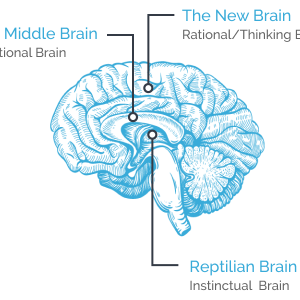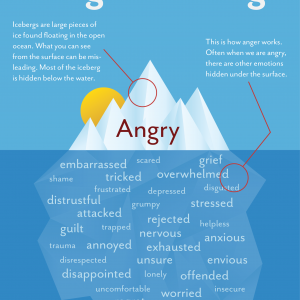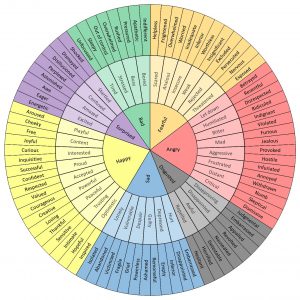Feelings February PT1: emotions and the human brain
February is going to be FEELINGS FEBRUARY! One post a week on feelings where we’ll cover the brain, the nervous system; look at some particularly prevalent emotions in our culture, and more.
Because February has already been commercialized into a month about love and relationships, I thought it would be relevant and important to do a thorough exploration of emotion and feeling during this time that pushes some pretty unrealistic expectations on relationships and can really activate people’s feelings!
So what the heck is an emotion?
Emotions are our bodies way of letting us know how we feel about something. They assist us in physically expressing a reaction we are having to something.
And what’s a feeling?
A feeling is the conscious experience of that emotion.
How does this play out in the brain?
Emotions are involuntary and come from the limbic brain, one of the oldest parts of the mammalian brain that controls aspects of emotions, memory and sensation. While having emotions is a limbic brain function, when we talk about our feelings, that is a neocortical function, from the neocortical part of the brain, the newest part of the human brain. Feelings can be triggered by socialized thoughts, constructs or perceptions that are stored in the neocortical brain, but the limbic brain does not know how to parse out the difference between incoming stimuli and neocortical reasoning.

Emotions are complicated to assess because they happen quickly and are often really intense. This means it’s easy to act out in the moment or make a fast conclusion about what we’re feeling (ANGRY!! SAD!! HAPPY!!). That’s when it becomes a valuable tool to become familiar with primary, secondary and tertiary emotions. There are 100’s of emotions not all of them even named or recognized in every language or culture.
Primary Emotions:
The feeling that overwhelms us when we experience or react to something. These feelings are often easy to access and classify (ex anger or joy). When we’re feeling activated, it is easier to attach the primary emotion to the stimulus/event (you said something rude to me therefore my anger is because of you and what you said). Then as neurone activity diminishes, the intensity of that feeling fades.

Secondary Emotions:
These are the emotions we have that are masked by the primary emotion. They are harder to access and they are also often emotions that we have learned to associate with certain actions or behaviours and have largely to do with how we were brought up and how we move through this world (you said something rude to me and it made me angry because, in fact, it made frustrated that you shut me down like that). By ignoring our secondary emotions we often never learn what our responses are really about and whether they are beneficial to our wellbeing or not.
Tertiary Emotions:
These can develop even after the secondary emotions and are often way more specific and sometimes even more difficult to assess (you said something rude to me and it made me angry because, in fact, it made frustrated that you’d shut me down like that. What you said actually really hurt me because it triggered a shame response and my instinct was to protect myself and hide my shame by getting angry at you).
Because primary emotions are so much easier to name, it’s really easy to solely focus on them or use them as our guide to responding to stimuli. Learning to identify secondary and tertiary emotions supports learning about how we process information and what we’re actually feeling about a certain situation. It supports us in learning about ourselves and gives us the ability to develop skills to better react and manage future situations that might trigger the same reaction. We begin to notice our patterns and are able to manage, evaluate, and change our coping strategies/behaviours. We learn what lies beneath the anger, what triggers the shame, why we learned to feel guilt and what our jealousy is really in response to. The more we learn about them the easier they become to sit in and that is really liberating.

Widening your emotional vocabulary:
Feelings wheels and feeling flashcards are tools used in various therapeutic approaches to support people in uncovering their emotions and their behavioural patterns. I still use a feelings wheel myself because it can be hard to get to the bottom of what’s bothering us and even harder to admit it. It can be uncomfortable, unsettling and difficult. Increasing our emotional vocabulary is useful in learning to talk about our own feelings, as well as intuit those of others. If I only know how to classify anger, then when I see someone angry, my ability to react is limited. If I can intuit that someone’s anger is perhaps coming from a place of irritability or frustration (perhaps not even about me), that can inform the ways I’ll choose to react as well as the ways I may choose to support myself or the other person.
Challenge: Try learning or naming a new feeling (or 2!) this week.
Next week: The nervous system and window of tolerance.
Stay tuned!


